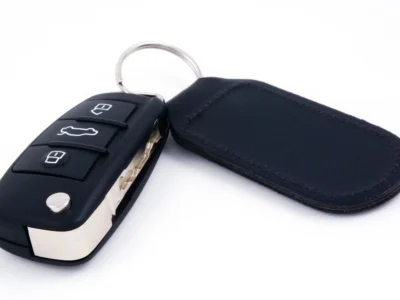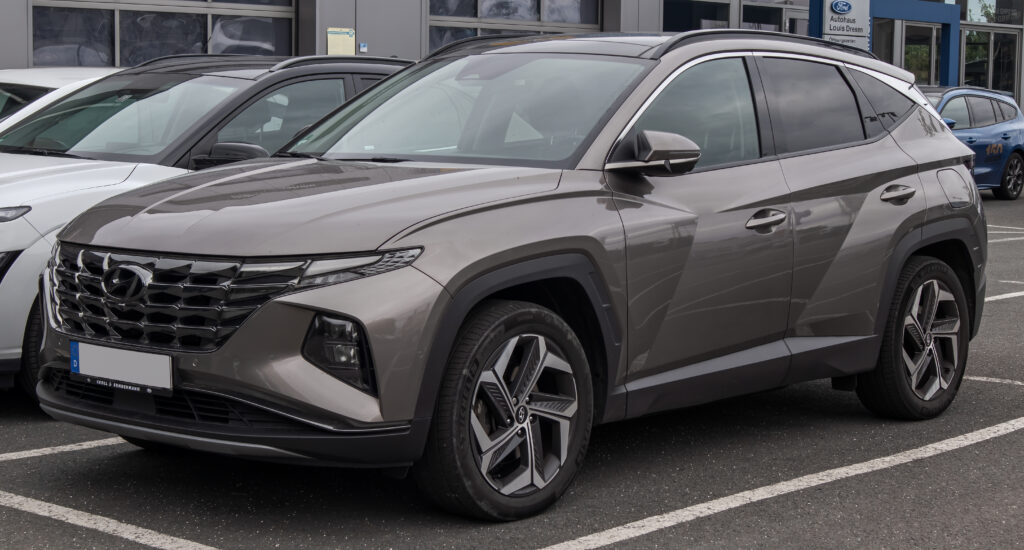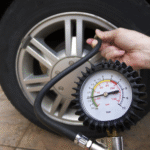
Hyundai Tucson Dashboard Warning Lights and Symbols Explained (2005–2025 Models)

Understanding your Hyundai Tucson dashboard warning lights is essential for maintaining performance, safety, and reliability. In this comprehensive guide, we cover every dashboard symbol, indicator, and error message found across all Hyundai Tucson models from 2005 through 2025—including petrol, diesel, hybrid, and plug-in hybrid variants.
- 🚗 Overview of Hyundai Tucson Dashboard Lights
- ⚙️ Engine and Powertrain Warning Lights
- 🛞 Brake and Stability Warning Lights
- 💡 Lighting and Visibility Indicators
- 🔋 Safety and Assistance Features
- 🧊 Cooling and Temperature Warnings
- 🔧 Maintenance and Service Indicators
- 🔄 Transmission and Drivetrain Alerts
- 🌿 ECO and Driving Modes
- ☔ Wipers and Weather-Related Warnings
- ⚠️ Dashboard Symbol Color Chart
- 🧰 When to Visit a Mechanic Immediately
- 🔍 Final Thoughts
🚗 Overview of Hyundai Tucson Dashboard Lights
Your dashboard serves as your vehicle’s communication hub, displaying alerts and system statuses through illuminated icons. These symbols are color-coded to indicate severity:
| Color | Meaning |
|---|---|
| Green/Blue | Feature active (no action needed). |
| Yellow/Amber | Caution—check soon. |
| Red | Urgent—stop driving and investigate immediately. |
⚙️ Engine and Powertrain Warning Lights
Check Engine Light (Malfunction Indicator Lamp)
A yellow or amber engine symbol indicates that the engine management system has detected a fault.
Possible causes include:
- Loose or damaged fuel cap
- Faulty spark plug or ignition coil
- Oxygen or MAF sensor failure
- Catalytic converter malfunction
Recommended action: Drive cautiously to a workshop for diagnostic scanning (OBD-II code readout).
Oil Pressure Warning Light
A red oil can icon means oil pressure has dropped dangerously low.
Do not continue driving.
Check your oil level immediately. If oil is full, contact a mechanic—your oil pump or engine bearings may have failed.
Battery/Charging System Light
A battery symbol indicates low voltage or alternator failure.
Possible reasons:
- Broken serpentine belt
- Corroded battery terminals
- Faulty alternator or voltage regulator
If the light stays on after starting, avoid long drives—you may lose power steering and engine function.
Glow Plug Indicator (Diesel Models Only)
When glowing green, the system is preheating diesel cylinders.
If it flashes yellow, it signals a malfunction in the glow plugs or engine temperature sensor.
🛞 Brake and Stability Warning Lights
ABS (Anti-lock Braking System) Warning
An ABS light means the system is deactivated due to a fault.
Your normal brakes still work, but you lose anti-skid protection on slippery surfaces.
Brake Fluid Low Warning
A red brake icon with an exclamation mark means your brake fluid is below minimum level.
Top up with DOT 3 or DOT 4 fluid and have your system checked for leaks.
Parking Brake Engaged
This red symbol appears when your handbrake or foot-operated parking brake is active.
If it stays on after releasing the brake, a sensor or switch fault may exist.
ESC / ESP Light (Electronic Stability Control)
Flashing indicates the system is actively stabilizing the car.
Constant illumination means the system is disabled or faulty—check sensors or steering angle calibration.
 Best Engine Oil for Hyundai Tucson (2025 Guide): Complete Oil Type, Viscosity, and Maintenance Chart
Best Engine Oil for Hyundai Tucson (2025 Guide): Complete Oil Type, Viscosity, and Maintenance ChartCheck Brake Pads
If you see a circle with dashed lines or “CHECK BRAKE PADS,” it’s time to replace your pads.
Ignoring it can damage rotors and increase repair costs.
💡 Lighting and Visibility Indicators
Low Beam Lights On
A green headlamp symbol shows your standard headlights are active.
High Beam Lights On
A blue headlamp icon indicates high beams are engaged—switch off within 400 m of oncoming traffic.
Automatic Light Malfunction
An amber headlight with “A” suggests the auto-light sensor has failed. Use manual control until replaced.
Fog Lights
- Front Fog Light: Green symbol pointing left
- Rear Fog Light: Amber symbol pointing right
Avoid using fog lights in clear conditions—fines may apply.
Heated Windscreen and Mirrors
Wavy arrows on glass icons show defrosting/heating is active. This function automatically turns off after several minutes.
🔋 Safety and Assistance Features
Airbag Warning Light
A red airbag icon means a potential fault in one or more airbags or crash sensors.
Even a faulty seat belt buckle sensor can trigger this—get it scanned immediately.
Lane Keeping Assist
An icon with lane lines indicates your lane assist is on. Flashing or amber icons mean the system is unavailable due to weather, poor lane markings, or sensor blockage.
Cruise Control Indicator
A green speedometer icon signals the system is ready.
When cruise control is actively engaged, it often turns blue or white.
Front Radar / Adaptive Cruise Fault
If a radar icon illuminates, your adaptive cruise or forward collision system is obstructed—clean the radar sensor or camera.
Attention Assist / Driver Alert
A coffee cup symbol means the vehicle has detected erratic steering or long driving periods. Take a break.
Tire Pressure Monitoring System (TPMS)
An amber horseshoe with an exclamation mark means one or more tires are under-inflated.
Check and inflate to the recommended PSI (usually on the driver’s door sticker).
 Best Engine Oil for Hyundai Tucson (2025 Guide): Complete Oil Type, Viscosity, and Maintenance Chart
Best Engine Oil for Hyundai Tucson (2025 Guide): Complete Oil Type, Viscosity, and Maintenance Chart How to Reset the Service Light on a Hyundai Tucson – Quick and Easy Guide
How to Reset the Service Light on a Hyundai Tucson – Quick and Easy GuideIf all tires are correct, a faulty TPMS sensor may need replacement.
🧊 Cooling and Temperature Warnings
Engine Coolant Temperature High
A thermometer symbol means your engine is overheating.
Pull over immediately, shut off the engine, and wait for it to cool.
Likely causes:
- Coolant leak or low level
- Faulty thermostat
- Radiator fan failure
Air Suspension Fault
In models equipped with air suspension, this amber light means a height or pressure sensor issue. Avoid rough roads until serviced.
🔧 Maintenance and Service Indicators
Service Reminder
A spanner icon or message “Service Due Soon” means maintenance is approaching based on mileage or time interval.
Check Wheel / Steering Fault
A steering wheel symbol may indicate alignment, EPS (electric power steering), or wheel balance issues.
Hood or Boot Open
A car icon with open bonnet or trunk warns that a latch isn’t secured. Recheck before driving.
🔄 Transmission and Drivetrain Alerts
Gearbox / Transmission Fault
A yellow cog icon often accompanies erratic shifting or reduced power.
Stop the car and have it inspected—continuing may cause expensive damage.
Steering Lock Indicator
When flashing, it confirms the steering wheel is locked—normal for parked cars.
If it stays on after ignition, the steering lock mechanism may be failing.
🌿 ECO and Driving Modes
ECO Mode Activated
A green ECO light means your Tucson is in fuel-saving mode.
Throttle response and air conditioning are optimized for efficiency.
Sport Mode
A red or orange SPORT indicator signals sharper throttle and steering dynamics.
Available on higher trims or hybrid models.
Auto Start-Stop System
An “A” with an arrow icon shows the system is active or deactivated.
If flashing, the feature is unavailable due to battery voltage or temperature.
Automatic Wipers Engaged
An icon resembling a windshield with lines indicates rain sensors are active.
These wipers automatically adjust speed according to rainfall intensity.
 Best Engine Oil for Hyundai Tucson (2025 Guide): Complete Oil Type, Viscosity, and Maintenance Chart
Best Engine Oil for Hyundai Tucson (2025 Guide): Complete Oil Type, Viscosity, and Maintenance Chart How to Reset the Service Light on a Hyundai Tucson – Quick and Easy Guide
How to Reset the Service Light on a Hyundai Tucson – Quick and Easy Guide How to Reset the Tire Pressure System on Your Hyundai Tucson — Complete 2025 Guide
How to Reset the Tire Pressure System on Your Hyundai Tucson — Complete 2025 Guide⚠️ Dashboard Symbol Color Chart
| Symbol Color | Urgency | Action Required |
|---|---|---|
| Green/Blue | Informative | No action required |
| Yellow/Amber | Caution | Check system soon |
| Red | Critical | Stop immediately and inspect |
🧰 When to Visit a Mechanic Immediately
- Oil, Temperature, or Battery lights are red
- Flashing Check Engine light
- Brake or Airbag warning
- Steering lock or ABS fault
Ignoring these may result in engine damage, brake failure, or loss of safety systems.
🔍 Final Thoughts
Your Hyundai Tucson’s dashboard is a sophisticated early-warning system designed to protect you and your vehicle. Recognizing what each symbol and color means helps you respond quickly—whether it’s topping up fluids, inflating tires, or seeking professional service.
Stay proactive: regular maintenance and diagnostic checks keep your Tucson performing at its best for years to come.
If you want to know other articles similar to Hyundai Tucson Dashboard Warning Lights and Symbols Explained (2005–2025 Models) you can visit the category Service and Parts.
Deja una respuesta





More content of your interest